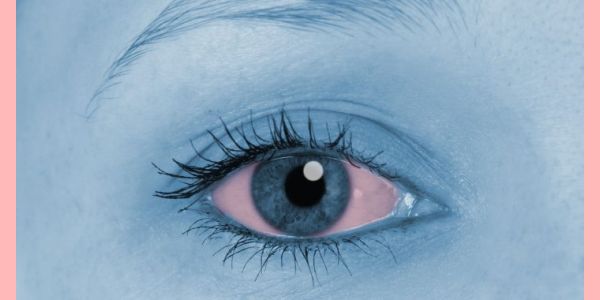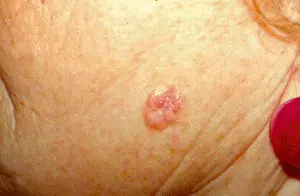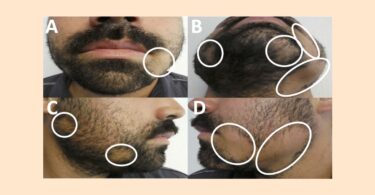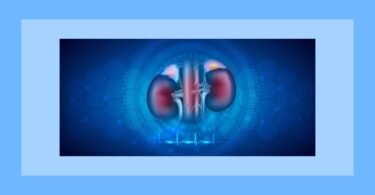In today’s industrialized world allergic disorders are increasing significantly. Approximately one-third of the worldwide population is affected by allergic diseases 1, and among them 40%–80% are ocular allergic disorders.2 The prevalence of this condition is greater in Western countries than in Asia or Africa.3
Ocular allergic disease involves conjunctivae, eyelids and surrounding structures. Allergic diseases of the conjunctivae not only include non-sight-threatening common conditions such as giant papillary conjunctivitis, contact allergy, seasonal allergic conjunctivitis, perennial allergic conjunctivitis but also sight-threatening conditions such as atopic keratoconjunctivitis and vernal keratoconjunctivitis. All of these conditions are type I hypersensitivity reactions.4
Diagnosis of allergic conjunctivitis (Homeopathy for Conjunctivitis)
Allergic conjunctivitis can be diagnosed based on clinical manifestations, however, there are laboratory tests that can be used to support the diagnosis.7
The following tests can be performed by allergists : Skin testing by scratch tests, intradermal injections of allergen, in-vitro tests for IgE antibodies to specific allergens.6
Conventional Treatment For Ocular Allergy
Avoid allergens which causes conjunctivitis
Topical antihistamines, mast cell stabilizers, topical corticosteroids.
Oral antihistamines, nonsteroidal anti – inflammatory drugs ( NSAIDs) and corticosteroids.
Pulsed regimen is recommended to minimize adverse reactions.
It is recommended that patients having a year-round allergic conjunctivitis should consult an allergy specialist to find out the allergens which are responsible for their symptoms1
Since allergic conjunctivitis can affect the vision and cause temporarily blindness, if symptoms of allergic conjunctivitis do not improve after 2-3 weeks of standard treatment, ophthalmologist evaluation is recommended.
Homoeopathic Treatment for Allergic Conjunctivitis
Acute remedies : Allium cepa, Hepar sulph, Arsenicum album,Euphrasia, Belladonna, Pulsatilla, Arsenicum Iodatum.
Chronic remedies : Natrum muriaticum, Natrum sulphuricum, Graphitis, Thuja , Pulsatilla, Medorrhinum, Sepia, Silica, Sulphur, Calcarea carbonica , Tuberculnium Bovista, etc.
As per homeopathy philosophy, miasms are the root causes of disease and predispose to various disorders. Latent/ dormant miasms may not produce disease symptoms but still carry specific disease tendencies. This latent miasm will express itself once it gets a favorable environment, such as weakened immune system, allergens, mental/physical stress etc.)
During Dr. Hahnemann’s time the diseases were simple and monomiasmatic, but with increasing modernization, pollution, suppressions and artificial modes of life and living, we are getting cases of multimiasmatic expressions such as: allergies, psychosomatic disorders, autoimmune disorders, psoriasis, malignancies.
A Cured Case of Ocular Allergy
A 20 year old female patient having red hot eyes showed up in the clinic. Her case history was as follows.
Before one year she started wearing contact lenses. Every time she wore contact lenses and within hours her eyes became red which made her remove the lenses. Even after removal of the lenses the redness continued and fully developed into allergic conjunctivitis with yellow discharge from eyes. Self treatment stopped giving relief. As a result, patient needed to see ophthalmologist for every allergic conjunctivitis attack.
She mostly stopped using contact lenses but couldn’t resist wearing them sometimes. This resulted in a visit to an opthalomologist, who prescribed various medications, which made her feel drowsy and gave upset stomach.
Personnel Medical History
History of suppression of weeping eczema in childhood “cured” with steroids including Betnovate (betamethasone) for external application.
Critical past history of bilateral pneumonia at the age of 2 months- treated with higher doses of antibiotics. It was resistant to many antibiotics
History of warts and allergic bronchitis between ages 8-15 years. It was cured with Ayurvedic treatment. No more bronchitis right now
Susceptibility to catch cold.
Family history
Mother- Otorrhea, diabetes. Father- hypertension. Brother- Allergic rhinitis
Thermals : Chilly patient. Prefer bathing with warm water, prefer warm food, prefer covering throughout the year, favorite season- winter, fanning require only in summer.
Desire: Spicy salty food, sour things, sweet. Aversion: cabbage, potato.
Mind : Highly irritable nature, contradiction aggravates the mental and physical well being, impulsive, anxious.
Tall, growing girl having long neck with black rings around the eyes
Her appetite is quite good and she eats healthy food, but still feels tired and needs to take B-complex and iron supplements intermittently.
The following keynote triggered my first prescription. Patient was in acute exacerbation at this point of time. Black circle around the eyes with history of defective assimilation of food, susceptibility to catch cold, inflammatory conditions of eyes, contradiction aggravate the mental and physical symptoms, irritable mind.
The first prescription was Natrum Muriaticum 200,4 doses, BID, followed by placebo TID for 13 days.
2nd Visit:- Patient came back in 2 weeks. Conjunctivitis subsided completely. Patient informed me that within a week of starting homoeopathic treatment, redness of eyes disappeared.
Second prescription was Thuja 200, 4 doses, BID- followed by placebo TID for 13 days ( Sycotic- history of warts in childhood.)
3ndVisit: –Placebo TID for one month
4th Visit:- Tuberculinum 200, 4 doses, BID – followed by placebo TID for one month ( Tubercular miasm- intercurrent medicine). Patient had mixed miasmatic background (Tubercular miasm), allergic tendency, susceptibility to catch cold. Tuberculinum works great for allergic patients.
5th Visit: Natrum Muriaticum 200, 4 doses, BID- followed by Placebo TID for one month
6th Visit: Patient informed that she was feeling more energy. Last week, she wore contact lenses and didn’t experience any eye redness or discharge. There were no cold attacks since four months.
I prescribed Tuberculinum 1m, 2 doses, BID – followed by placebo TID for one month
7th Visit: One episode of cold between 6th and 7th Visit – This episode was treated with Belladonna 200. I prescribed placebo TID for one month.
8th Visit: Nat Muriaticum 1m, 3 doses BID – followed by placebo TID for one month. Black circles around the eyes with history of defective assimilation of food, susceptibility to catch cold, inflammatory conditions of eyes, contradiction aggravates the mental and physical symptoms, irritable mind.
9th Visit: – Carcinosin 200,4 doses, BID- followed by placebo TID for one month ( intercurrent medicine) .Patient hypersensitive to criticism and impulsive. Recurring diseases. Family history of diabetes pointed toward Carcinosin.
The first prescription was given in 13th March 2003. In Nov. 2003, I evaluated the patient as follows:
Patient started using contact lenses after four months of treatment. She didn’t experience a single episode of allergic conjunctivitis in the last eight months. Patient experienced increased energy and didn’t take any vitamin supplement in last five months. Susceptibility to cold reduced almost 60% but didn’t vanish completely.
I her that there is no further need to continue treatment for ocular allergies, however, it is good to receive further constitutional miasmatic treatment for her nasal allergy- since allergy is a autoimmune disorder.9
I decided to follow this patient for another six months with constitutional treatment.
I am glad that with the help of eight months of homoeopathic treatment she was able to wear contact lenses without any fear of ocular allergy.
REFERENCES
- Key B. Allergy and allergic diseases. Part I. N Engl J Med. 2001;344:30–37.
- Ono SJ, Abelson MB. Allergic conjunctivitis update on pathophysiology and prospects for future treatment. J Allergy Clin Immunol. 2005;115(1):118–122.
- Hussain A, Awan H, Khan MD. Prevalence of non-vision-impairing conditions in a village in Chakwal district, Punjab, Pakistan. Ophthalmic Epidemiol. 2004;11(5):413–426.
- Fonacier L1, Luchs J, Udell I. Ocular allergies. Curr Allergy Asthma Rep. 2001 Jul;1(4):389-96.
6.Friedlander MH. Ocular Allergy. Curr Opin Allergy Clin Immunol. 2011;11(5):477–482. doi: 10.1097/ACI.0b013e32834a9652.
- Rothman JS, Raizman MB, Friedlaender MH. In: Cornea. Fundamentals, diagnosis, and management. 3. Krachmer JH, Mannis MJ, Holland EJ, editor. St Louis: Mosby Elsevier; 2011. Seasonal and perennial allergic conjunctivitis; pp. 570–571.
- Ventocilla M.
Allergic Conjunctivitis Medication.http://emedicine.medscape.com/article/1191467-medication ( Assessed on 2017.03.14)
9.https://www.nih.gov/news-events/news-releases/nih-scientists-find-link-between-allergic-autoimmune-diseases-mouse-study





